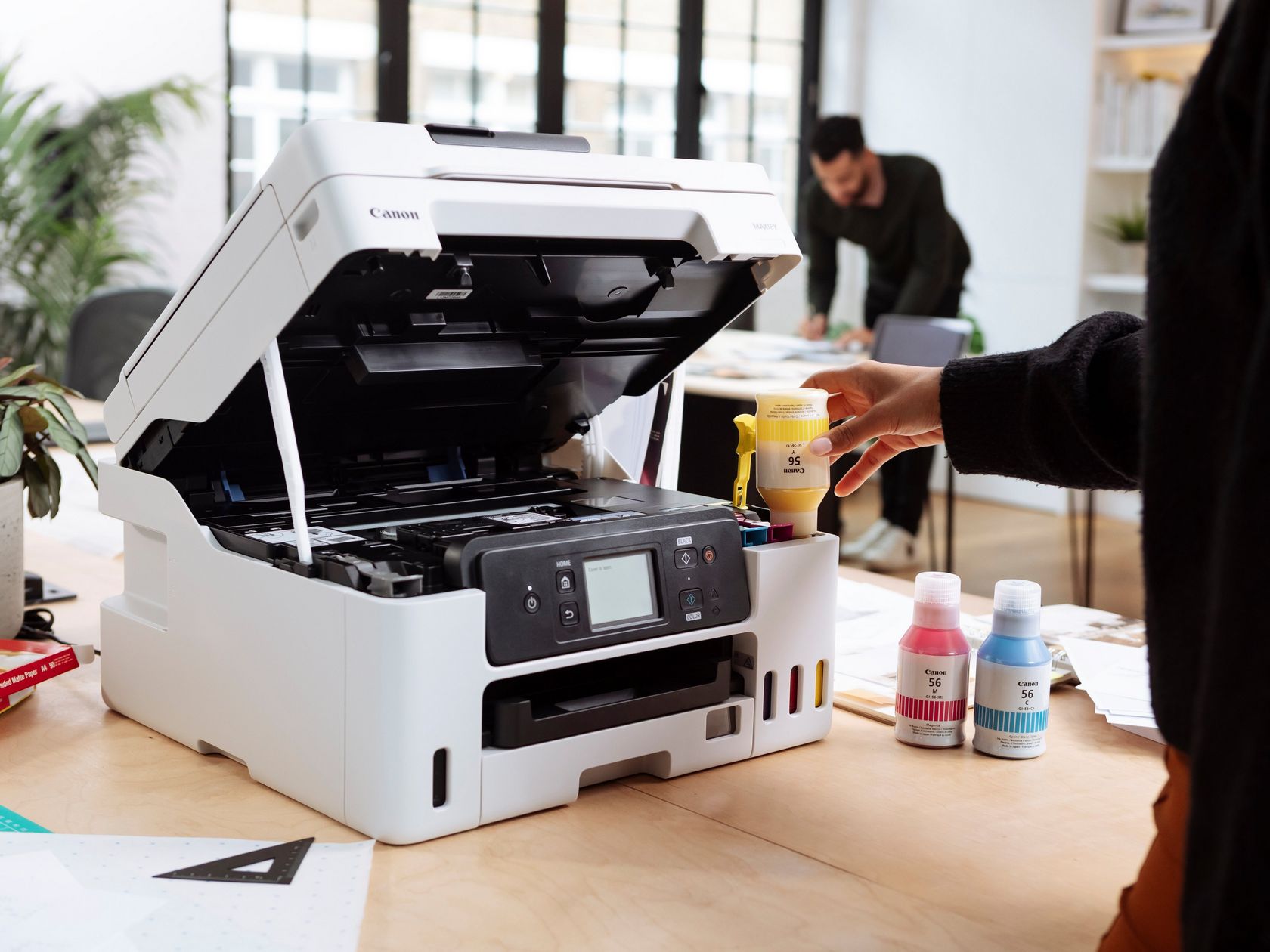Are Ink Tank Printers Worth It? Pros, Cons, and Should You Buy One?

Ink tank printers are becoming more popular as an alternative to standard inkjet and laser printers. They use refillable ink tanks instead of disposable cartridges, which can save you money over time, especially if you print a lot. But are they really worth it? In this article, we’ll walk through the pros and cons of ink tank printers, who they’re ideal for, and whether they’re a good fit for your home or office.
What Is an Ink Tank Printer?
Ink tank printers are inkjet printers that use large, refillable ink tanks instead of small, disposable cartridges. They can print thousands of pages before needing a refill, making them a practical option for frequent users.
Ink tank printers take a different approach to traditional inkjet printing, offering a more efficient and economical way to handle ink use. You’ll find them sold under names like:
Most models are all-in-one machines, offering printing, scanning, and copying functions in one compact unit. Many also support Wi-Fi printing from phones, tablets, and laptops. Some even handle A3 printing, which is great for posters, artwork, and large documents.
Pros of Ink Tank Printers
- Lower Cost Per Page
Bottled ink is significantly cheaper than buying replacement cartridges, which means the cost to print each page drops considerably. This is especially useful for people who print large volumes of documents, like students, home office users, or small businesses. Over time, the savings can add up quickly, making ink tank printers a smart long-term investment.
- High Ink Capacity
Ink tank printers typically come with large reservoirs that hold much more ink than a traditional cartridge. Many models are capable of printing thousands of pages before requiring a refill. This means less frequent maintenance, fewer interruptions, and less hassle—ideal if you’re printing reports, handouts, or even full-colour images on a regular basis.
- Better for the Environment
Refillable ink systems create far less plastic waste than disposable cartridges. Many ink bottles are also made with recyclable or eco-conscious packaging. If you’re trying to reduce your environmental footprint, switching to a refillable system can be a small but impactful change.
- Easy Refills
Modern ink tank printers are designed with ease of use in mind. Refill bottles often come with spill-resistant nozzles, and the refill ports are easily accessible. Most users find the process simple and clean, especially compared to handling fiddly cartridge replacements. It's convenient, even for those new to using refillable systems.
- Solid Print Quality
Despite being more economical, ink tank printers don’t sacrifice print quality. They’re capable of producing crisp text and vibrant colour prints, making them suitable for a variety of uses, from everyday documents to high-quality photos and graphics.
- Great for Regular Users
If you print frequently, whether it’s for work, school, or creative projects, an ink tank printer can be a reliable tool. Many models include scanning and copying functions, wireless connectivity, and support for mobile printing, making them versatile and efficient for daily use.
Cons of Ink Tank Printers
- Higher Upfront Cost
Ink tank printers tend to be more expensive at the point of purchase compared to traditional cartridge-based printers. While you’re likely to save money over time, the initial investment can be a barrier for some buyers, especially if they don't print often enough to justify the cost.
- Slower Speeds Compared to Laser Printers
While ink tank printers are excellent for quality and economy, they aren’t the fastest. If you're primarily printing large batches of black-and-white text documents, a laser printer may complete the job more quickly and efficiently. This can be a consideration for offices or users who need speed above all else.
- Ink Can Dry Out If Unused
If you go long periods without printing, the ink in the tanks can dry up and clog the printer’s nozzles. This can lead to maintenance issues or wasted ink during cleaning cycles. For casual users who only print occasionally, this could become a recurring inconvenience.
- Refilling Takes a Bit of Effort
Although modern ink refilling systems are designed to be user-friendly, it still requires more hands-on attention than simply snapping in a new cartridge. For users who prefer quick, no-fuss maintenance, the process may feel like a downside, even if it’s relatively easy.
Who Ink Tank Printers Are Best For
Ink tank printers are a great match for:
- Home users who print regularly for school, hobbies, or photos
- Small businesses or home offices with frequent printing needs
- Creative professionals who need high-quality colour printing without overspending
Who Should Probably Skip Them
Ink tank printers aren’t the best fit for every situation. You might want to consider other options if:
- You only print occasionally and want a lower-cost setup
- Speed is a priority, especially for lots of black-and-white documents
- You prefer the simplicity of cartridges over manual refilling
- You’re on a tight budget and need something basic for occasional use
- You're a student with light or irregular printing needs who might benefit more from a low-cost cartridge printer or university printing services
- You print occasionally and don’t want to pay more upfront
- You prefer faster printing speeds, especially for text-heavy jobs
- You’d rather not bother with refilling ink manually
- You’re working with a tight budget and just need a basic printer
Final Thoughts
Ink tank printers make sense for people who print regularly and want to reduce their ongoing printing expenses. They use less plastic waste, require fewer refills, and deliver solid print quality for a wide range of everyday needs.
That said, they’re not perfect. If you don’t print often, need high-speed printing, or don’t want to deal with refilling, a standard cartridge-based printer or a laser model might be a better match.
































